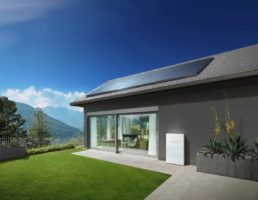Installing rooftop solar panels is one of the best ways consumers can do their bit to lower emissions. The transition towards renewable energy sources is being adopted and invested in by individuals, governments, businesses, and industry.
Regardless of your point of view on the issue of climate change, it is almost impossible to deny the economics of it.
There are clear household economic benefits to installing solar panels, which is why Australians are world leaders. In 2020 alone we saw 3,000MW of new installations – that’s almost twice the size of the Liddell coal generator that is due to start closing next year.
Like a lot of society’s advancements, our regulations struggle to keep up with how quickly technology moves. Such is the case with rooftop solar.
The draft access and pricing decision by the Australian Energy Market Commission (AEMC) last week is seeking to set up our rules to deliver a smarter, fairer grid.
The AEMC’s draft decision has been portrayed by some as a ‘solar tax’. There’s been more heat than light – and sensible policy discussions, like solar panels, don’t work so well in those conditions.
It’s well documented that the grid is now dealing with two-way power flows it wasn’t built for. Despite the fact that more than two and a half million Australian households have solar, currently the rules only require distributors to offer one-way import services to customers.
One of the key changes the AEMC is proposing is to update the regulatory framework to clarify that distribution services are indeed two-way and include export services.
This draft decision is not the industry nor the AEMC imposing new policies on customers. Rather, it combines three rule change proposals, driven mainly by customer representatives.
One was from St Vincent de Paul and another a joint proposal from Total Environment Centre and the Australian Council of Social Services. These came out of an earlier ARENA process.
This is as broad a consultation process as you’ll see and the AEMC’s draft decision is consistent with the many discussions held around the challenging issues of access and pricing for distributed energy resources (DER).
This also isn’t an industry grab for greater revenue. It is critical to note that any export charges introduced cannot increase revenue for distribution networks. Network profits will not go up.
Network tariffs are designed to recover a set target revenue allowance set by the Australian Energy Regulator. Specific tariff designs do not increase revenue for distributed network services providers (DNSPs), hence potentially introducing export tariffs will be revenue neutral for DNSPs.
In fact, because the total revenue for networks is capped, any revenue raised from export charges must lead to lower network usage charges for all solar and non-solar customers.
Some have suggested that this is hitting solar households while big generators pay nothing. This isn’t true, big generators do pay, they just pay differently.
Large generators that use the transmission lines pay significant up-front costs to connect as well as fees to make sure that they do not do anything to impede the reliability and security of the system – the ‘do no harm’ system strength provision.
Further, where there is congestion in the transmission grid, generators in that area (both thermal and renewable) are penalised by low marginal loss factors (that reduce their returns) and potentially being constrained off.
The feedback from network customers around the country is clear: customers want the network to accommodate more solar, but they want limits on that expenditure and are happy to tolerate occasional constraints on solar output to balance that.
Some parts of Australian networks are already at solar saturation and new solar connections are being told they are not able to export their power back into the grid – customers are already facing costs from being blocked form exporting.
Customers view these zero export limits as a ‘first-in, first-served’ approach that is unfair; rather, all customers should be able to export some solar.
The AEMC draft decision is squarely designed to meet these challenges by encouraging greater solar hosting capacity and fairly apportioning costs.
There’s no doubt DER integration is a major challenge. The blunt reality is without the sort of changes facilitated by this AEMC draft decision, we will end up stuck in a world where we have more pressure for networks to increase spend on solar enablement, more zero export limits and more solar curtailment.
All bad news for customers.
Export charging is not a panacea, but it needs to be part of the plan, along with better signals for everyone to consume more when there is excess solar, such as SA Power Networks’ solar sponge tariff.
The AEMC’s draft decision will also allow networks to pay (not charge) solar and battery customers to export energy back into the grid at times of peak demand.
To be clear, we aren’t going to see material export charges anytime soon, in fact when export prices are eventually introduced, they might not raise much revenue as they will encourage self-consumption, electric vehicles and household batteries.
That would be a great outcome, as it would reduce the strain on the grid and keep costs down for everyone.
Everyone wants that don’t they?
Andrew Dillon is the Chief Executive Officer of Energy Networks Australia, the peak industry association for electricity and gas networks.










